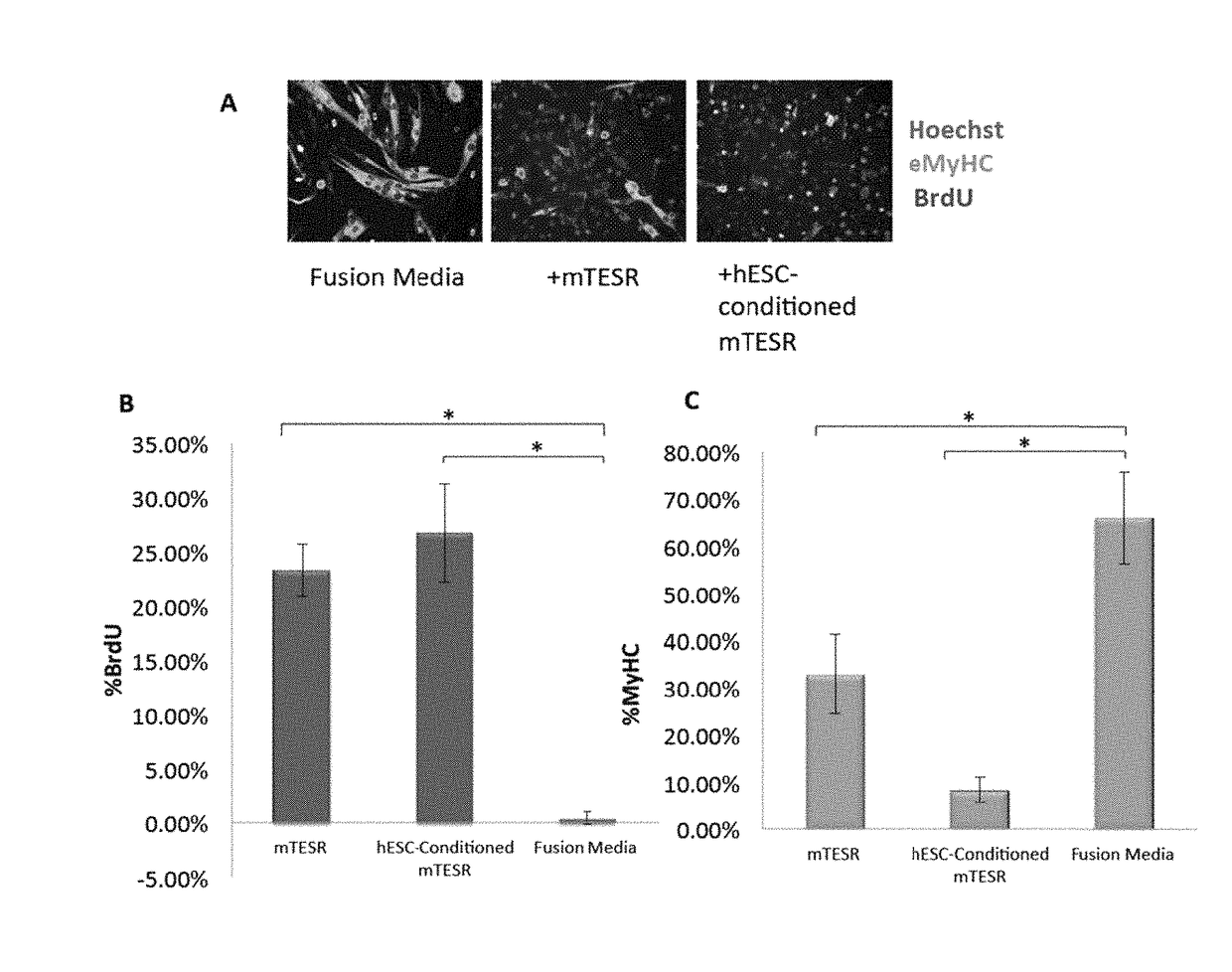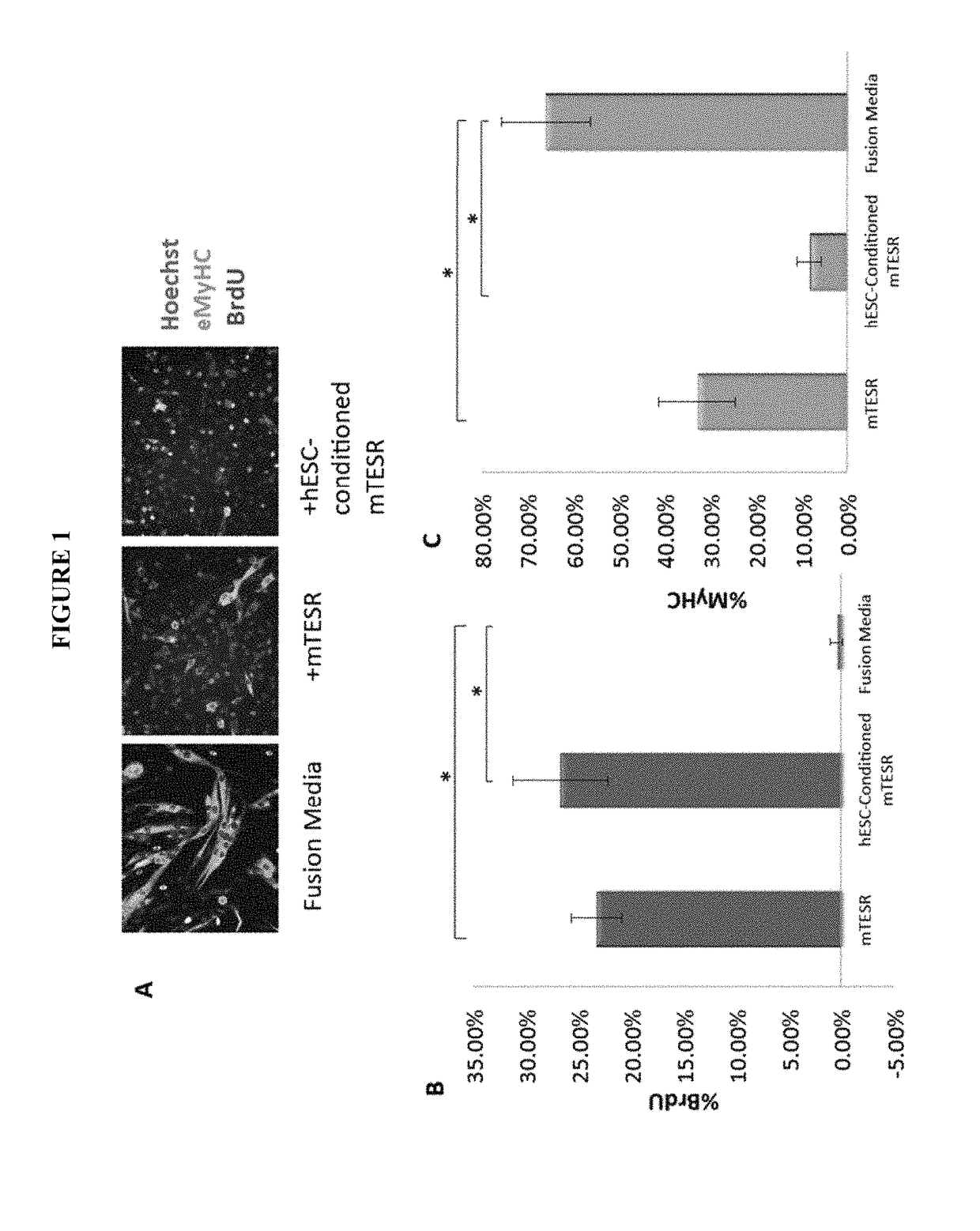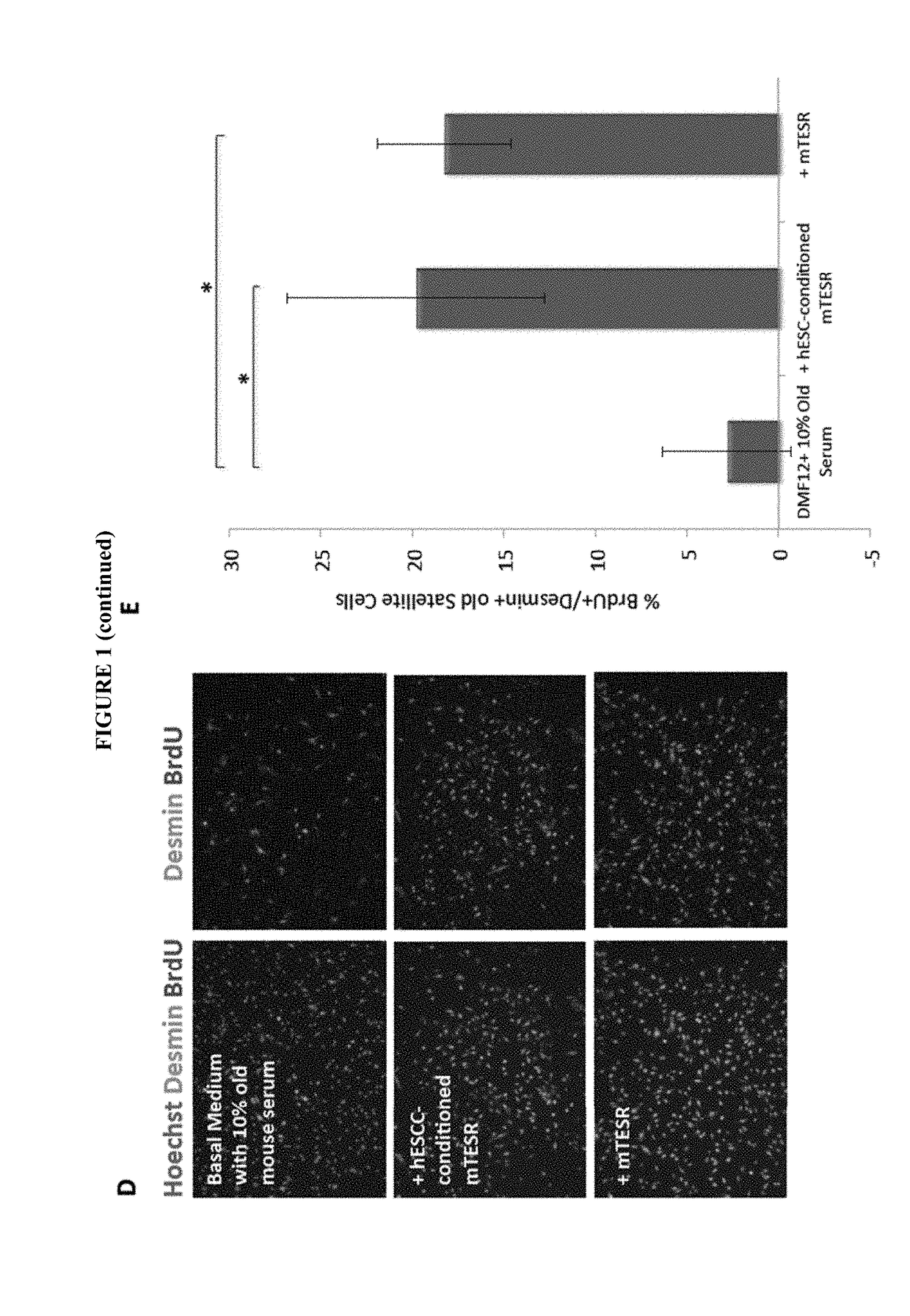Methods and compositions for somatic cell proliferation and viability
a somatic cell and composition technology, applied in the field of somatic cell proliferation and viability, can solve the problems of stem cell and progenitor cell loss, stem cell function and proliferative capacity of adult stem cells, and limited regeneration capacity of somatic cells, so as to increase and improve the viability of the neuron
- Summary
- Abstract
- Description
- Claims
- Application Information
AI Technical Summary
Benefits of technology
Problems solved by technology
Method used
Image
Examples
example 1
mTeSR-1 Growth Medium has Pro-myogenic Activity, which is Due to the High Levels of FGF-2, and hESC-secreted Factors Act Independently of Recombinant FGF-2
[0148]Our previous work established that injection of hESCs—which were cultured on mouse embryonic fibroblasts (MEF) and in standard, highly mitogenic, embryonic cell growth medium—enhanced old muscle regeneration (Carlson, M. E. and I. M. Conboy, Aging Cell, 2007. 6(3): p. 371-82). In our more recent work, the hESCs have been cultured in mTeSR-1 (Stem Cell Technologies), a defined feeder-free medium which is also highly mitogenic (Ludwig, T. E., et al., Nat Methods, 2006. 3(8): p. 637-646), and we investigated whether and to what degree the pro-myogenic effects of hESC-conditioned medium was due to the residual activity of the hESC growth / expansion medium. Primary muscle progenitor cells (myoblasts) were cultured overnight in a mitogen-low fusion medium that typically induces differentiation of myoblasts into multinucleated eMyHC...
example 2
FGF-2 Signaling and Satellite Cell Proliferation are not Increased with Age
[0150]FGF-2, which often functions as a mitogen, was recently reported to contribute to the aging and depletion of mouse satellite cells. However, the canonical model of muscle stem cell aging postulates that a decline in such mitogens over time leads to reduced activation of satellite cells that are resident to old tissue (Conboy, I. M. and T. A. Rando, Cell Cycle, 2012. 11(12): p. 2260-7; Grounds, M.D., Ann. N.Y. Acad. Sci., 1998. 854: p. 78-91; onboy, I. M. and T. A. Rando, Cell Cycle, 2005. 4(3): p. 407-410), so we explored these phenomena in more detail. The levels of FGF-2 were determined by Western Blotting in muscle fibers that were derived from Tibialis Anterior (TA) and Gastrocnemius (Gastroc) muscle of young and old mice. As shown in FIG. 3A (quantified in 3B), a significant increase in FGF-2 protein was observed with age in myofibers, consistent with Chakkalakal et al. FGF-2 signals through the MA...
example 3
The Pro-regenerative Activity of hESC-Secreted Factors is Contained in Proteins with Heparin Binding Domains
[0153]To confirm that the factors in hESC conditioned medium were proteins, hESC conditioned Opti-MEM was treated with proteinase-K agarose beads, and the beads were removed before mixing 50 / 50 with Opti-MEM and 5% mouse serum, for culture with injury-activated satellite cells with associated fibers from old muscle, as above. All proliferative activity of the conditioned medium was lost after proteinase treatment, indicating that protein(s) conferred the pro-regenerative activity (FIG. 7).
[0154]To deplete heparin-binding proteins, hESC-conditioned medium was incubated with heparin binding domain-coated acrylic beads. Muscle progenitor cells were then cultured in this heparin-depleted hESC-conditioned medium, hESC-conditioned medium, or controls (medium alone and medium conditioned by differentiated cells that lack the pro-regenerative activity). Proliferation of primary muscle...
PUM
| Property | Measurement | Unit |
|---|---|---|
| time | aaaaa | aaaaa |
| time | aaaaa | aaaaa |
| time | aaaaa | aaaaa |
Abstract
Description
Claims
Application Information
 Login to View More
Login to View More - R&D
- Intellectual Property
- Life Sciences
- Materials
- Tech Scout
- Unparalleled Data Quality
- Higher Quality Content
- 60% Fewer Hallucinations
Browse by: Latest US Patents, China's latest patents, Technical Efficacy Thesaurus, Application Domain, Technology Topic, Popular Technical Reports.
© 2025 PatSnap. All rights reserved.Legal|Privacy policy|Modern Slavery Act Transparency Statement|Sitemap|About US| Contact US: help@patsnap.com



